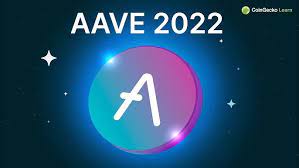African American Vernacular English (aave), also known as Ebonics, is a unique and influential form of English spoken primarily by African Americans. It is not just a dialect, but a complex linguistic system with distinct grammatical structures, vocabulary, and phonetics. AAVE has shaped American culture, music, and even mainstream language, yet it has often been misunderstood or stigmatized. This article explores the history, features, cultural significance, and modern-day impact of AAVE.
The Origins of AAVE
The roots of AAVE can be traced back to the African diaspora. During the transatlantic slave trade, millions of Africans were forcibly brought to the United States. These individuals came from diverse linguistic backgrounds, and the need for communication among speakers of different African languages led to the creation of a pidgin—an improvised, simplified form of communication.
Over time, this pidgin evolved into a creole language, blending elements of African languages with English. As generations passed, the creole gradually developed into what is now known as AAVE. While AAVE shares some characteristics with other English dialects, its distinctiveness lies in its unique linguistic features, influenced by African language structures and cultural expressions.
Key Features of AAVE
AAVE is characterized by several features that set it apart from Standard American English (SAE). These features encompass pronunciation, grammar, vocabulary, and syntax.
- Phonological Features (Pronunciation)
- Consonant Cluster Reduction: AAVE speakers often reduce consonant clusters, particularly at the end of words. For example, “test” may sound like “tes,” and “cold” may sound like “col.”
- Final Consonant Deletion: In words like “walk” or “talk,” the final “k” sound is sometimes omitted, making them sound like “wal” or “tal.”
- Th-Fronting: The “th” sound in words like “this” or “that” is often pronounced as a “d” or “t,” making “this” sound like “dis” and “that” sound like “dat.”
- Grammatical Structures
- Be-Deletion: In AAVE, the verb “to be” is often omitted when referring to a present state or action. For instance, instead of saying “He is going,” an AAVE speaker might say “He go.”
- Use of Double Negatives: AAVE frequently uses double negatives for emphasis. For example, “I don’t know nothing” means “I don’t know anything.”
- Inversion of Subject and Verb: In some instances, AAVE may invert the order of the subject and verb, particularly in questions or emphatic statements. “You got the money?” is a common example.
- Vocabulary and Slang
- AAVE has enriched American English with a wide range of slang words and expressions. Many of these terms have crossed over into mainstream language, especially in popular culture. Words like “cool,” “chill,” “lit,” “bae,” and “woke” all have roots in AAVE.
- Code-Switching: Many African Americans who speak AAVE also switch between dialects depending on the context, a practice known as code-switching. In professional or formal settings, an individual might use Standard English, while in casual or cultural contexts, they might revert to AAVE.
AAVE and Cultural Identity
AAVE is more than just a linguistic form; it is a cultural marker that plays a central role in identity. For many African Americans, speaking AAVE signifies a connection to the African American community and heritage. It embodies a shared history of struggle, resilience, and resistance. AAVE has long been associated with Black cultural pride and is seen as a symbol of solidarity within the community.
In the face of historical marginalization and prejudice, the development and preservation of AAVE also represent a form of linguistic resistance. It challenges the dominant narrative that associates “proper” English with whiteness and conformity, offering an alternative linguistic identity that celebrates African American culture and expression.
The Influence of AAVE on Popular Culture
The cultural impact of AAVE is most visible in music, particularly in genres like hip-hop, rap, and R&B. Artists such as Tupac Shakur, Jay-Z, Beyoncé, and Kendrick Lamar use AAVE not only as a form of self-expression but also to reflect the lived experiences of Black people in America. Through their lyrics, they tell stories of struggle, empowerment, and resilience, all while using a linguistic form that resonates deeply with their audience.
AAVE has also made its way into mainstream media. Television shows, movies, and advertisements often incorporate AAVE to give characters authenticity and connect with younger audiences. Phrases like “on fleek” and “slay” have gained widespread popularity, thanks in large part to their use in social media and viral videos. This blending of AAVE with mainstream culture has sparked both praise and criticism.
The Stigmatization of AAVE
Despite its cultural significance, AAVE has often been stigmatized and dismissed as “incorrect” or “inferior” English. Historically, African American children speaking AAVE were penalized in schools for using their natural dialect. The linguistic prejudice against AAVE reflects broader societal biases that devalue African American culture and identity.
In education, AAVE has been the subject of debate. Some scholars advocate for recognizing it as a legitimate linguistic system, while others argue for teaching students to switch to Standard English in formal settings. Efforts to incorporate AAVE into educational curricula have faced resistance, often based on misconceptions about the dialect’s legitimacy or perceived lack of sophistication.
AAVE in the Digital Age
The digital era has played a crucial role in the spread and evolution of AAVE. Social media platforms like Twitter, Instagram, and TikTok have made it easier for AAVE to reach a global audience. Memes, viral challenges, and influencers often use AAVE to communicate with a wide range of followers, normalizing its use outside African American communities.
The rise of digital communication has also allowed for the reclamation of certain words and expressions that may have been marginalized or misinterpreted. For example, terms like “woke” and “sis” have been widely embraced, but their meaning and usage are often reshaped by their digital context.
Conclusion
AAVE is a powerful, dynamic dialect with a deep cultural and historical legacy. It is more than just a way of speaking—it is a reflection of identity, resilience, and creativity. Despite the challenges posed by linguistic prejudice, AAVE continues to influence American culture and beyond, enriching the language, music, and media of our time. As society moves toward greater recognition of linguistic diversity, AAVE’s role as both a cultural marker and a legitimate form of communication will continue to evolve, shaping the future of language in the process.

